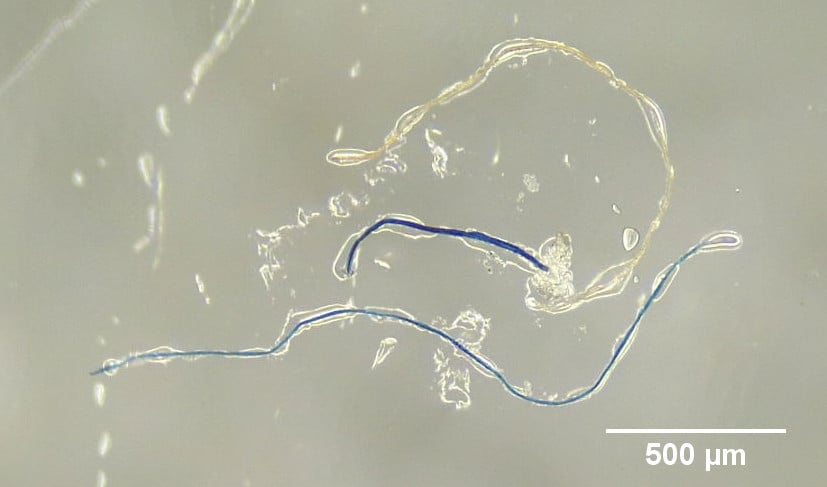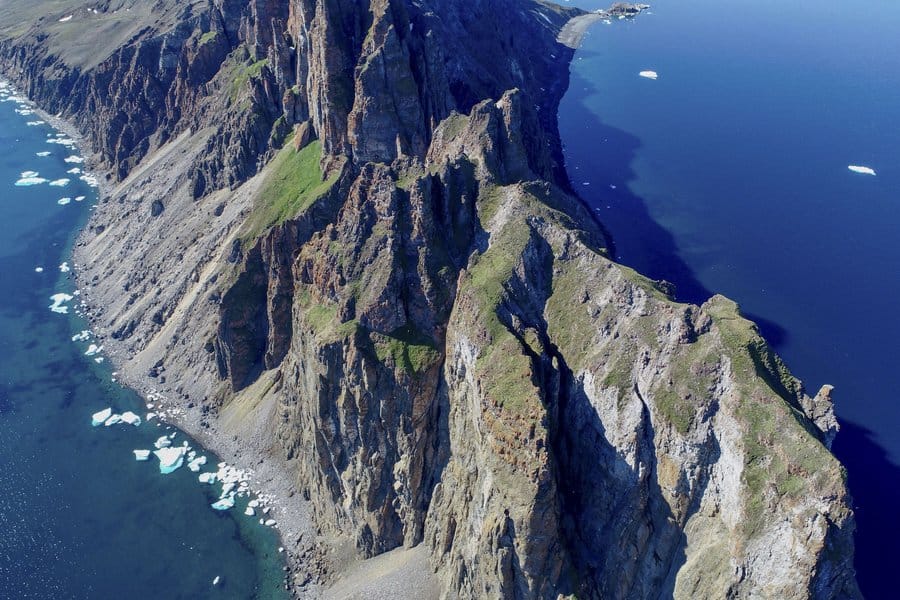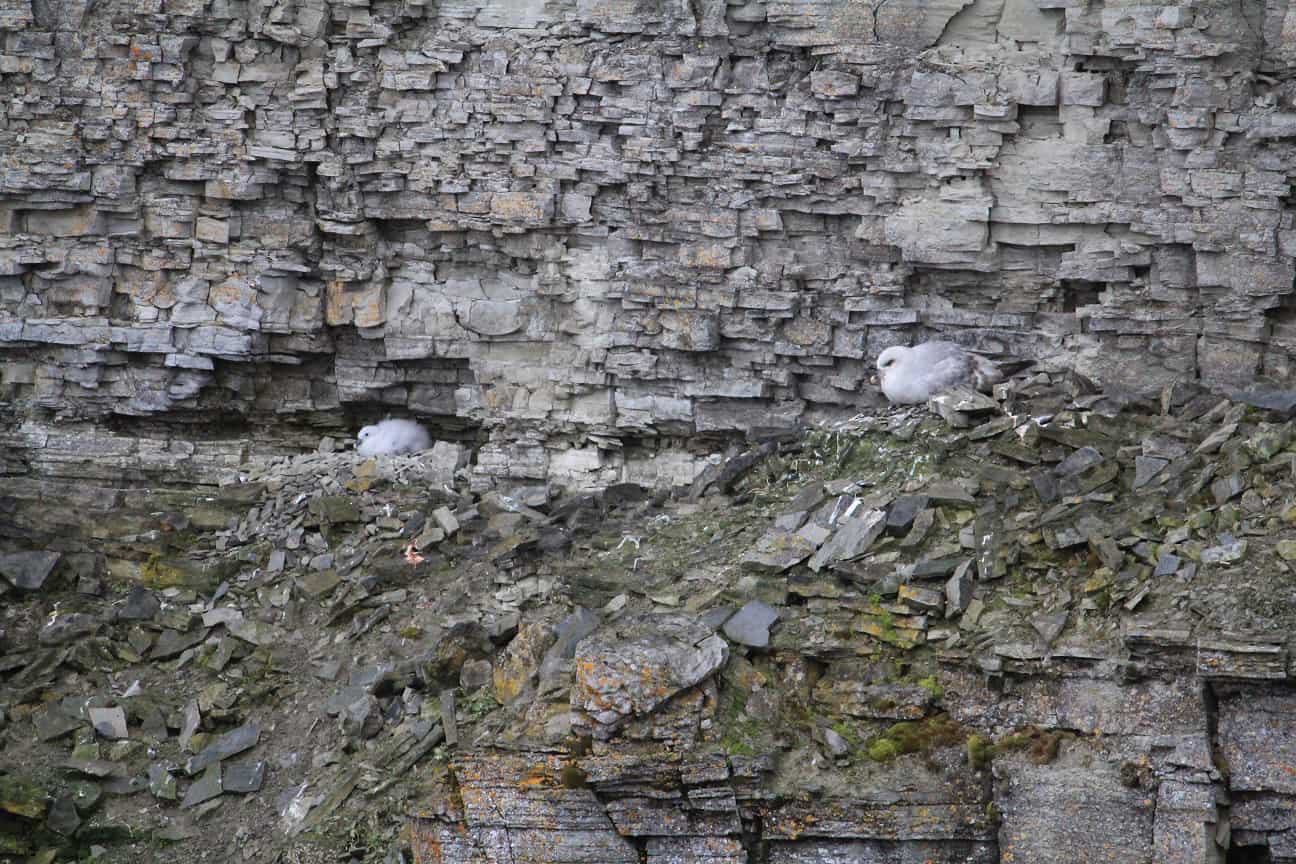Share this article
Seabirds deposit microplastics onto Arctic
Seabirds in the Arctic may be removing microplastics from the ocean and dumping them right back on land.
“Colonial seabirds could be acting as an important source of microplastic concentration in Arctic environments,” said Madelaine Bourdages, a PhD Student in geography at Carleton University and the lead author of a study published recently in Science of the Total Environment.
Previous research has shown that seabirds can ingest contaminants from the ocean and release them back on land through their droppings. One study found Arctic terns (Sterna paradisaea) and gull species can dump nitrogen, phosphorous and other chemicals that can fertilize vegetation in otherwise barren areas. Other research showed that birds in eastern Canada can ingest large quantities of discarded plastic and metal.

Microplastic particles appear in a northern fulmar. Credit: Madelaine Bourdages
Bourdages and her co-authors, some of whom were involved in the previous research, wanted to look at whether seabirds were acting as vectors for the movement of microplastics specifically.
They dissected 27 Northern fulmars (Fulmarus glacialis) collected from the Qaqulluit National Wildlife Area and 30 thick-billed murres (Uria lomvia) from the Akpait National Wildlife Area in August 2018 — both large bird colonies located on eastern Baffin Island in Nunavut.
The researchers examined the last 10 centimeters or so of the intestinal tract, dissolved and filtered the samples and examined them under a microscope in search of microplastics — tiny particles left over from degraded plastics or from microfibers that likely originated in clothing. The guano is excreted back on land rather than getting caught inside the birds like some larger pieces.

A northern fulmar colony in Qaqulluit National Wildlife Area. Credit: Cody Dey
The team found 34 particles of microplastic and human-originated material in the bird samples they examined — 24 from fulmars and 10 from murres. The particles varied in size and shape, but most were fibers and others fragments.
Bourdages said the numbers of particles they detected in the birds are much smaller than the amount that would be found in wastewater close to larger towns. But those microplastics in individual birds can add up. Since these seabirds concentrate in massive colonies on Baffin Island — the fulmars have about 25,000 breeding pairs while the murres have about 130,000 pairs — the birds may be dumping large quantities of microplastics from the ocean back onto land.
The researchers aren’t entirely sure how the plastics end up in a relatively pristine ocean area. It could be that microplastics make their way into the northern waters through ocean currents and are picked up by the seabirds there. Or the birds themselves could carry them northward during their yearly migrations.
“One of the ideas is that they could be ingesting the plastic where they’re feeding and then transporting them back to the colonies,” Bourdages said, adding that the plastics may be larger when the birds first consume them and break down in the digestive tract until they are small enough to be excreted.

Northern fulmars nest on a cliff in the Qaqulluit National Wildlife Area in Nunavut, Canada.
Credit: Jennifer Provencher
But this isn’t completely clear. The murres, for example, didn’t have plastic in their stomachs, though 17% of their intestines had them.
“It adds to the growing literature that microplastics are this ubiquitous contaminant that’s spreading through the environment,” she said. “There’s quite a bit of work that’s looking at how other contaminants are moving up north to the Arctic.”
It’s also unclear what effect, if any, the microplastics might have on the birds. But Bourdages said monitoring the quantity of microplastics in the birds could be one way of tracking plastic levels in the Arctic environment in general.
Header Image: Thick-billed murres nesting. Credit: Jennifer Provencher








